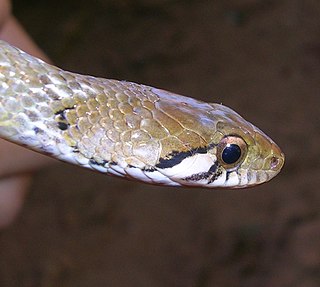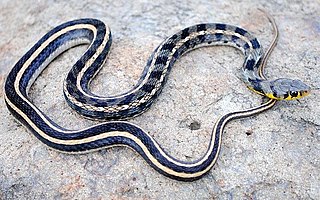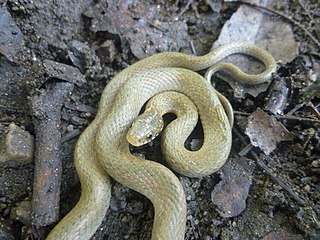
The Nilgiri keelback, also known commonly as Beddome's keelback, is a species of snake found in the Western Ghats in India. The species is named after Richard Henry Beddome, 1830–1911, British army officer and naturalist. It was first discovered near the Nilgiris but is now known more widely from the Western Ghats. This snake is terrestrial and feeds on toads.
Hebius modestus, commonly known as the modest keelback or Günther's keelback, is a species of natricine snake endemic to Asia.

Amphiesma monticola, also known as the Wynad keelback, is a harmless colubrid snake species endemic to the Western Ghats of India, where it has been recorded in the Kodagu and Wayanad regions.
The Yunnan keelback is a species of natricine snake which is endemic to Asia.
The Assam keelback, commonly known as Peal's keelback, is a species of snake in the subfamily Natricinae of the family Colubridae. The species is endemic to Northeast India. It has recently been rediscovered after 129 years in Arunachal Pradesh.

The Himalayan keelback is a species of grass snake in the family Colubridae. The species is endemic to South Asia.

The buff striped keelback is a species of nonvenomous colubrid snake found across Asia. It is a typically nonaggressive snake that feeds on frogs and toads. It belongs to the subfamily Natricinae, and is closely related to water snakes and grass snakes. It resembles an Asian version of the American garter snake. It is quite a common snake but is rarely seen.
Wall's keelback is a species of natricine snake endemic to Northeast India.
Blythia reticulata, commonly known as Blyth's reticulate snake, Blyth's reticulated snake, or the iridescent snake, is a species of snake in the subfamily Natricinae of the family Colubridae of the superfamily Colubroidea. The species is endemic to Asia.
Doria's green snake is a species of snake in the family Colubridae. The species is endemic to Asia.

Rhabdophis plumbicolor, known as the green keelback or lead keelback, is a species of nonvenomous snake in the family Colubridae native to parts of the Indian subcontinent.

The checkered keelback, also known commonly as the Asiatic water snake, is a common species in the subfamily Natricinae of the family Colubridae. The species is endemic to Asia. It is non-venomous.
St. John's keelback is a species of snake in the subfamily Natricinae of the family Colubridae. The species is endemic to Asia.

The Japanese keelback is a species of colubrid snake, which is endemic to Asia.
The Sabah keelback is a nonvenomous colubrid endemic to Borneo.
Rhabdophis ceylonensis is endemic to the island of Sri Lanka. The species is commonly known as the Sri Lanka blossom krait, the Sri Lanka keelback, and මල් කරවලා or නිහලුවා (nihaluwa) in Sinhala. It is a moderately venomous snake.
Stoliczkia is a genus of snakes in the family Xenodermidae. The genus contains two species, both from India.

Hebius is a genus of snakes in the family Colubridae.
Hebius venningi, commonly known as the Chin Hills keelback or Venning's keelback, is a species of snake in the family Colubridae. The species is endemic to Asia.

Hebius sauteri, commonly known as Sauter's keelback or the Kosempo keelback, is a species of snake in the family Colubridae. The species is endemic to Asia.











